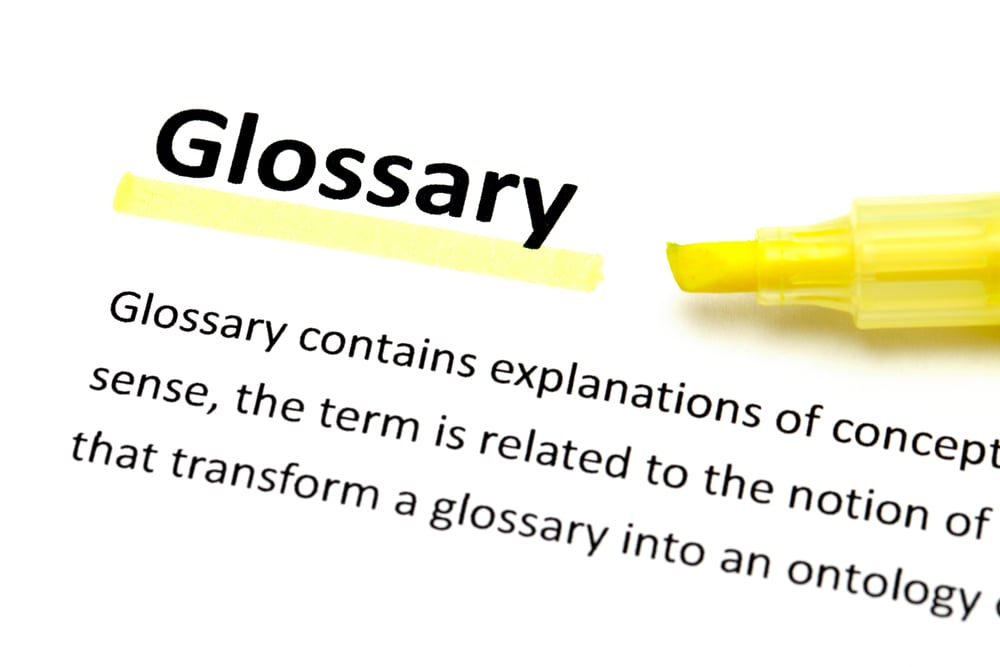Every industry has its own language. As marketers and brand managers are discovering just how valuable out of home advertising can be, they are also discovering there’s more lingo they need to learn in order to navigate OOH successfully. It can quickly become mind-boggling. So many terms to learn — some pertinent to all out of home, some specific to traditional formats, some specific to digital formats. What’s a marketer to do?
Approach the situation efficiently, of course. Focus on the most important/common terms (read on because we’ve got you covered below), and keep a full-strength glossary at hand for quick reference — this one for OOH in general, this one for digital OOH.
Frankly, we sort of pulled 25 out of the air as the must-know number of terms. The specific terms most important for you as a marketer depend on what you’re promoting and to whom. On the other hand, familiarizing yourself with the bigger picture is a great way to see what other possibilities exist. Who knows? A new term you learn could be the inspiration for an entirely new advertising campaign!
We’ll take them in alphabetical order, but let’s start with the most obvious term.
Out-of-home (OOH) media
All types of advertising that aim to reach targets when they are outside their home. Out-of-home displays can be located either outdoors or indoors.
Ad exchange
A digital marketplace that connects OOH sellers and buyers.
Ad network
While an ad exchange directly links OOH buyers and sellers, an ad network serves as a third-party intermediary to facilitate sale/placement of available ad inventory.
Approach
The distance from where an individual can first see an OOH ad until it is no longer visible.
Audience delivery
The number of people who may view an outdoor ad, as measured by impressions, ratings, or reach and frequency.
Charting
Choosing the locations, types of OOH media and duration of an out-of-home campaign.
Demand-side platform (DSP)
Technology that enables media buyers to purchase advertising from multiple companies, net or exchanges.
Digital OOH media
Electronic billboards, mobile and place-based displays screens that can display dynamic content. Digital billboards display multiple static messages in rotation, place-based screens can display static or dynamic content including videos via automated programming.
Dwell time
How long a consumer is in within viewing proximity to an OOH ad.
Effective reach
The average number of targeted audience members who are exposed at least 3 times to an OOH ad.
Embellishment
Cut-outs, add-ons, lighting or other special effects elements added to a billboard or other OOH unit.
Exposure
Measurement of actual eye contact as consumers pass OOH advertising.
Flight
The duration of a billboard campaign, typically 4 weeks.
Geopath
GeoPath is a technology tool used by OOH buyers to measure audience location for campaign planning.
Impressions
The number of times consumers are likely to notice an OOH ad.
Location map (or list)
A compendium of all locations included in an OOH campaign.
Message duration
How long a digital message is visible on screen.
OOH video networks
Closed-circuit networks that display informational and/or advertising content in specific locations such as medical offices.
Place-based media
OOH ad that target audiences based on a specific place where they can be found, such as a sports arena, mall, restaurant or movie theater.
Poster
A printed billboard in 8-sheet size or other smaller dimensions, presented in a stand-alone frame or affixed to a wall.
Proof-of-performance (POP)
Verification provided by an OOH company that advertising has been delivered as contracted.
Sheets
Billboards are printed in sections, so their size is designated in number of sheets — for example a 30-sheet poster is 12’3″ x 24’6″, whereas an 8-sheet poster is 6’ x 12′. Oddly, these size designations apply to digital billboards, too.
Supply-side platform (SSP)
Technology that allows web publishers and DOOH media owners to sell and manage their advertising inventory, accessing a multiple exchanges and networks from a single platform.
Traffic count
Measured number of vehicles or pedestrians that pass a given point over a specific period of time. Traffic count is used to plan and measure OOH advertising.
Wild posting
A series of posters affixed to walls or fencing, typically surrounding a construction site. Wild postings are sometimes referred to as construction advertising.
